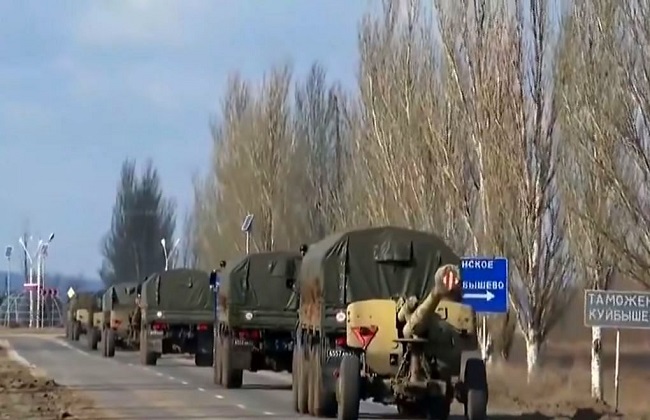
Developing countries are facing a combination of crises that are unprecedented in recent times. Over the last three years they have had to face the COVID-19 crisis, the food crisis, the energy crisis, the climate change crisis, the debt crisis and, on top of all this, a global recession. The crises have overlapped, and each has added to the problems created by the previous ones.
Much of the “fault” for these crises lies with the big countries – their desire for geo-political domination, the continued emission of GHGs, the tight money policy of recent months.
There are strong calls for increased aid flows and debt relief, as well as special funds for the countries most affected by high prices, debt burdens or climate change. These actions, much of which will be funded by the developed countries, are needed and necessary to avoid widespread suffering, political turbulence and increased migratory flows.
But these short term actions will not solve underlying problems. There is a need for new thinking; for paradigm shifts; and for new directions by developing countries. So what needs to be done?
Most importantly and most urgently, there needs to be a reform of food systems. Food systems have already shown incredible resilience by coping with COVID related lockdowns, and with the large reverse migrations that took place from urban to rural areas as people lost jobs and incomes. But new directions are needed for food systems to take on the current challenges. Actions are needed in four areas.
First – developing countries need to reduce their dependence on rice, maize and wheat, three crops which account for half of all calories consumed. For many counties agro-climatic conditions are not suitable for these crops and there is a high reliance on imports. This import reliance has been exacerbated by rapid urbanization that has raised the demand for easily-prepared, convenience food. But there are hundreds, if not thousands of indigenous products – cereals, oilseeds and crops and livestock products that have been ignored by policy makers, researchers and Government extension services. This needs to change.
Second – food production systems must make increased use of Green Technologies, technologies that are much less reliant on purchased inputs in particular pesticides and chemical fertilizers. Such improved techniques, many of which have been already tried and tested, include integrated pest management, improved crop rotation and multi-cropping, greater use of nitrogen-fixing crops, zero-tillage and mulching. These techniques that make much more intelligent use of the complex interaction between soil, plants, plant residues and livestock waste.
Third – value chains need to be shortened with monopolies and restrictive practices by traders and middlemen reduced. Progress was made in this regard during the COVID crisis, mainly through greater use of ICT, but this needs to be followed through much more strongly.
Finally, social safety nets need to be strengthened. Governments cannot cushion the entire population from price increases but does have a responsibility to ensure that children and vulnerable groups are cushioned.
Next in terms of urgency is the energy crisis. A large part of the import bill of many developing countries comprises oil and gas. Reducing this dependence is now more urgent than ever. There are two complementary actions needed:
First – there has to be a major drive towards increasing production of renewable energy – particularly solar energy. With falling prices of panels, solar energy is now the cheapest form of energy and most developing countries have plenty of space and sunshine.
Second – solar or wind energy needs to be complemented with other forms of energy that can meet base needs. The most suitable for doing this is through greater use of nuclear energy which, with today’s fourth generation technology, is much safer and less polluting than it used to be. Given high investments costs, as well as the difficulties in setting up suitable regulatory, oversight and contingency systems, smaller countries may need to work jointly to create such nuclear power facilities.
The debt crisis has created a large and growing risk of defaults with the poorest being the most vulnerable. Already in 2019, almost half of low-income and least developed countries (LDCs) were assessed as being at high risk of external debt distress or already in debt distress. Since then, the external debts of developing country have continued to rise and are eating up a growing proportion of export earnings. And this was before the present interest rate hike. Most debt was taken when real interest rate (corrected for perceived risk) were close to zero.
In addition to ongoing discussions on debt forgiveness, there has to be a discussion between creditors and debtors on repayments especially on interest payments. The burden of the unexpected rise in interest rate needs to be a shared burden.
Finally, developing countries need to find ways to cushion themselves against the recessionary effects of slowing growth world trade. In the current system, global trade flows are dominated by USA, China and Europe.
In order to break their dependence on these large economies, developing countries need to work to create regional and bilateral trade agreements. Such trade agreements may not be easy. However, the crisis has created conditions where out-of-the-box thinking is essential and cultural and political barriers to regional trade – such as those which limit trade between India and Pakistan – need to be overcome.
Daud Khan works as consultant and advisor for various Governments and international agencies. He has degrees in Economics from the LSE and Oxford – where he was a Rhodes Scholar; and a degree in Environmental Management from the Imperial College of Science and Technology.


